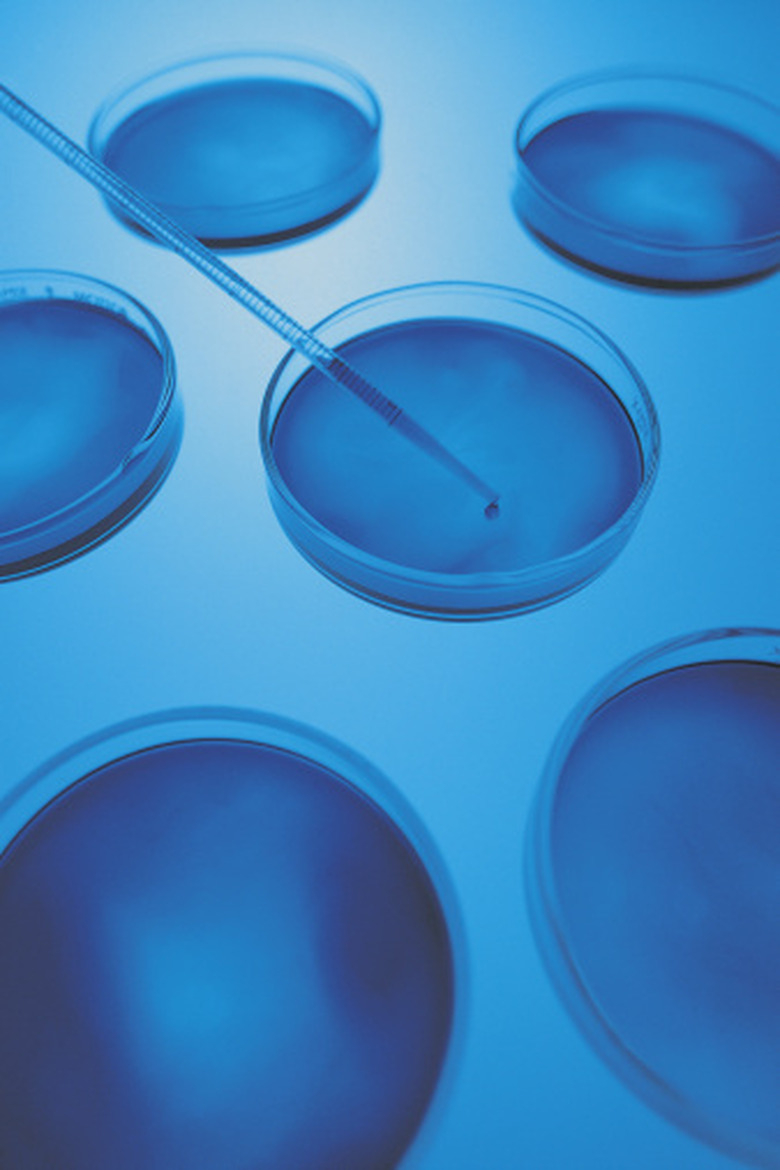The Difference Between How Internal & External Regulators Work
Internal and external regulators both work to determine the length of time from one cell division to the next. This interval is called the cell cycle. Cells must divide because, if they grow too large, they cannot move wastes or nutrients through the cell membrane. The cell membrane separates the interior of the cell from its outer environment. All cells have a cell membrane.
Cell Division
Cell Division
Every cell must divide, but division costs energy and introduces the opportunity for error. For example, each cell must fully replicate, or copy, its DNA before division can begin. DNA, or deoxyribonucleic acid, contains the genetic information that will allow the two new "daughter" cells that form from the single "mother" cell to operate and grow. Each cell has built-in regulators to reduce the capacity for mistakes as far as possible and to prevent uncontrolled growth.
Internal Regulators
Internal Regulators
Internal regulators are proteins that react to changes within a cell. For example: The fact that a normal cell will not enter mitosis until its entire DNA has been replicated is regulated by a protein within the cell. This protein is an internal regulator. Mitosis is the biological term for the division of a mother cell into two daughter cells. A second internal regulator, also a protein, makes certain that the newly formed copy of the original cell's DNA is complete and properly attached before the two versions begin to move to opposite sides of the cell.
External Regulators
External Regulators
External regulators are also proteins, but they react to stimuli from outside the cell. They direct cells to either speed or slow the cell cycle based upon outside conditions. For example, one protein reacts to molecules on the outside of a neighboring cell. This helps make certain that cells stop dividing when overcrowded. This explains why, in a petri dish, cells will continue to grow and divide only until they have formed a thin layer along the bottom.
Differences and Importance
Differences and Importance
The key difference, then, between internal regulators and external regulators is that internal regulators react to stimuli from within the cell and external regulators react to stimuli from outside the cell. Without these regulators, cell growth would be haphazard and dangerous. In fact, many human maladies are caused by interference in this process. Cancer cells, for example, lack these inhibitions. They do not stop dividing when overcrowded, but rather form masses of tissue that invade nearby organs, impairing their functions. Smoking, exposure to radiation and some viruses can also interfere with the regulatory process.
Cite This Article
MLA
Osborne, Alan. "The Difference Between How Internal & External Regulators Work" sciencing.com, https://www.sciencing.com/difference-internal-external-regulators-work-8547250/. 24 April 2017.
APA
Osborne, Alan. (2017, April 24). The Difference Between How Internal & External Regulators Work. sciencing.com. Retrieved from https://www.sciencing.com/difference-internal-external-regulators-work-8547250/
Chicago
Osborne, Alan. The Difference Between How Internal & External Regulators Work last modified March 24, 2022. https://www.sciencing.com/difference-internal-external-regulators-work-8547250/
